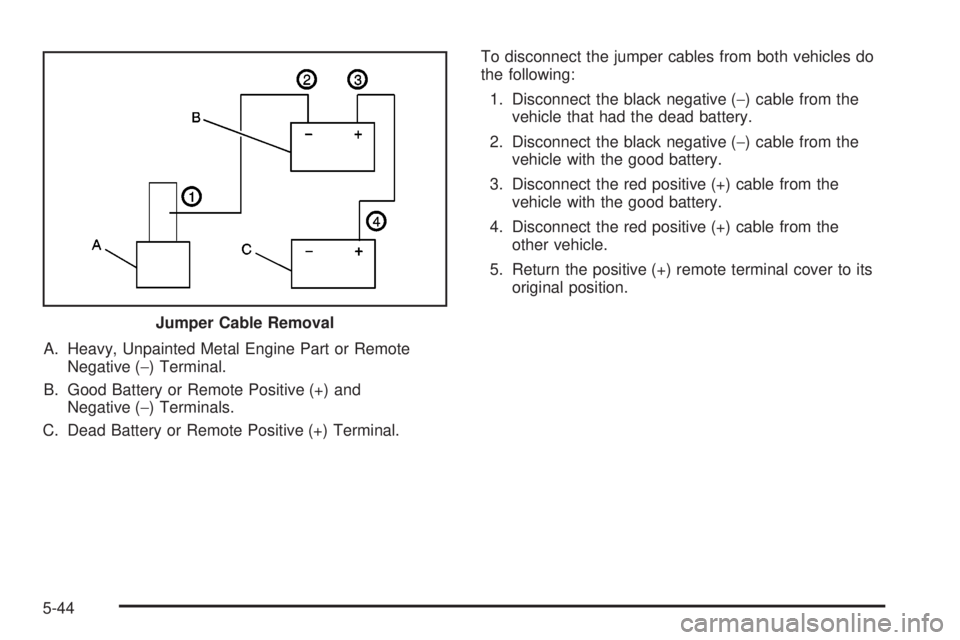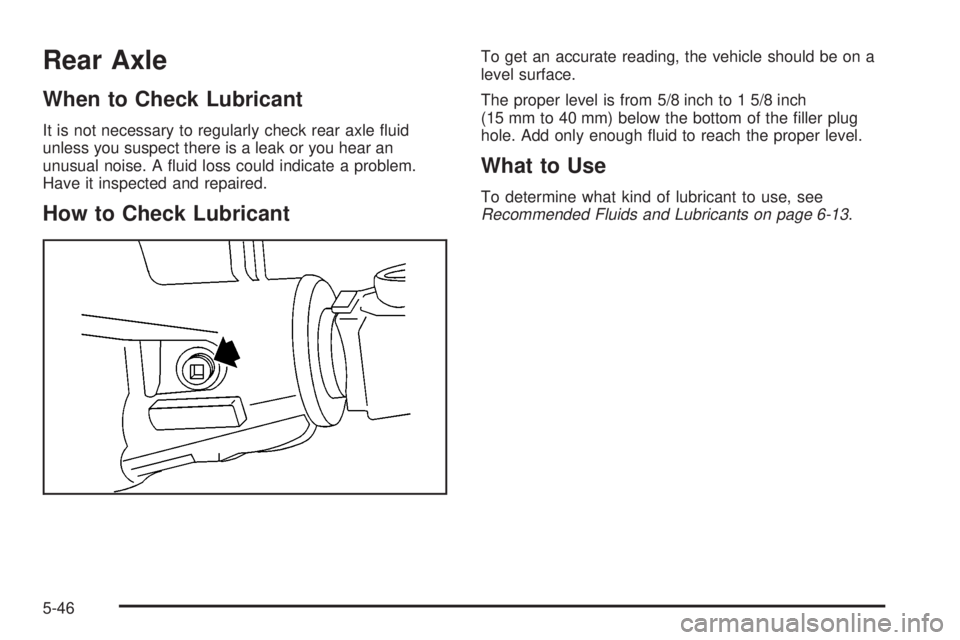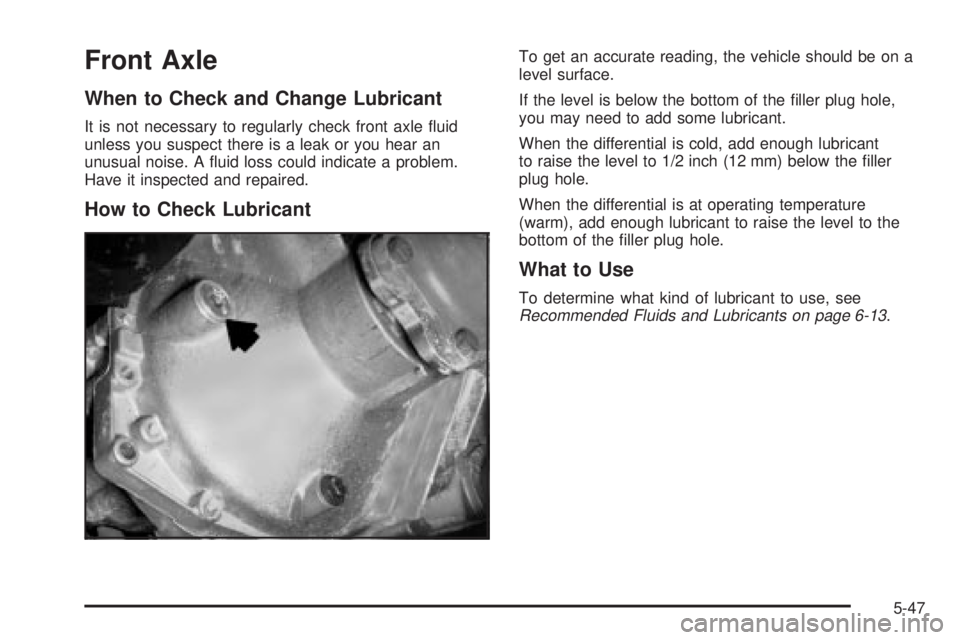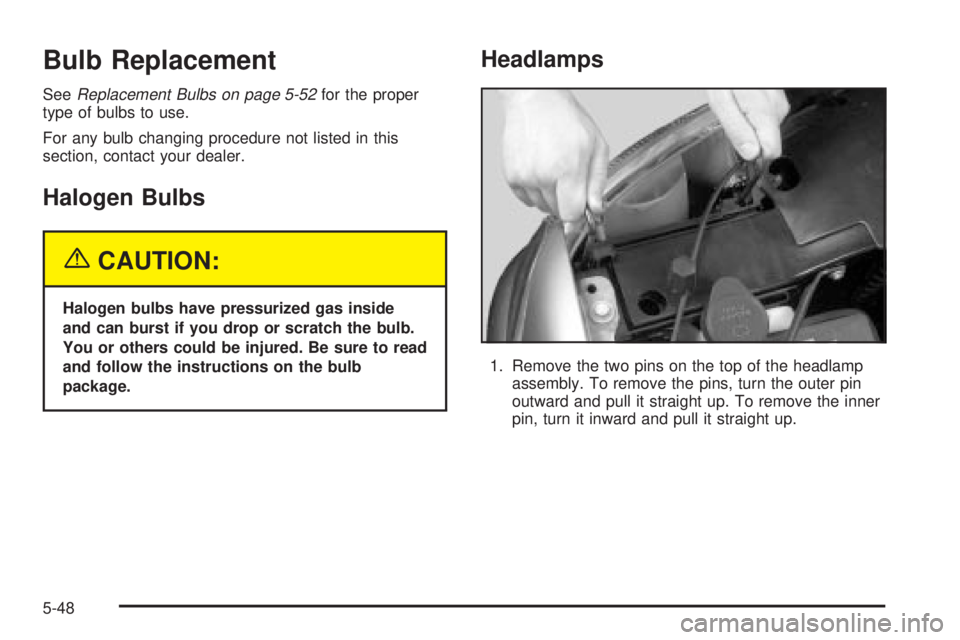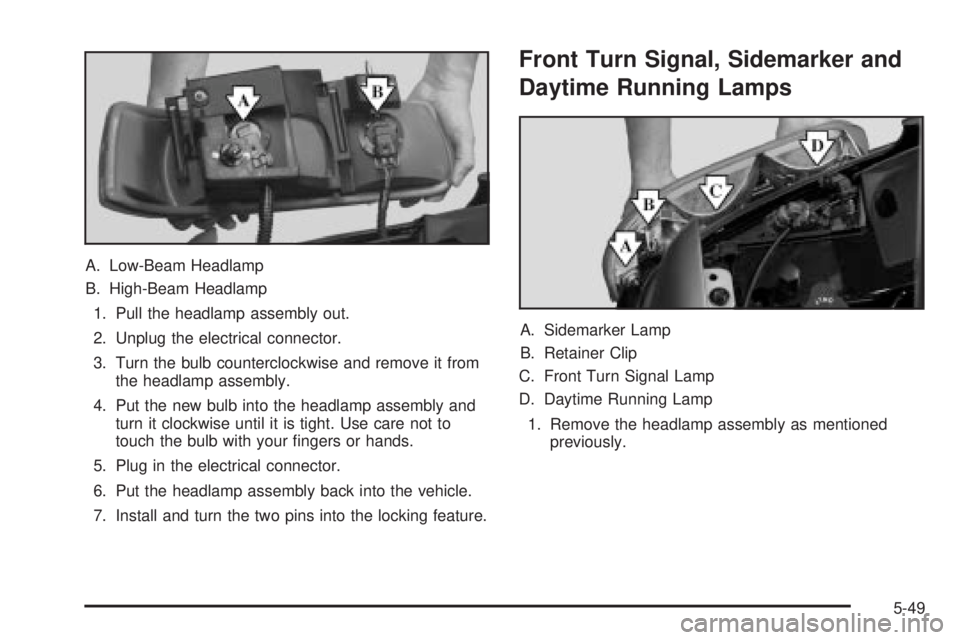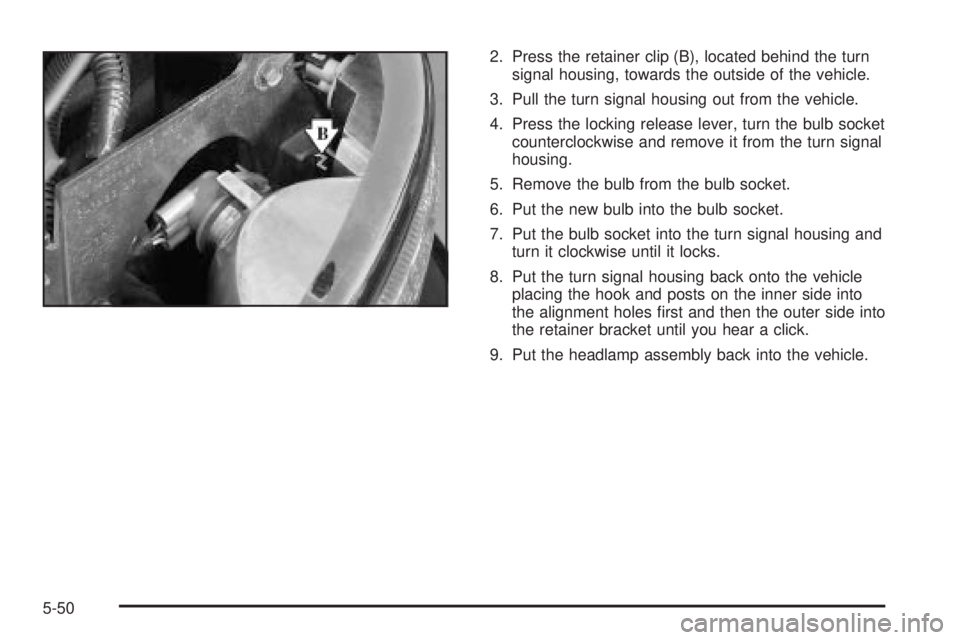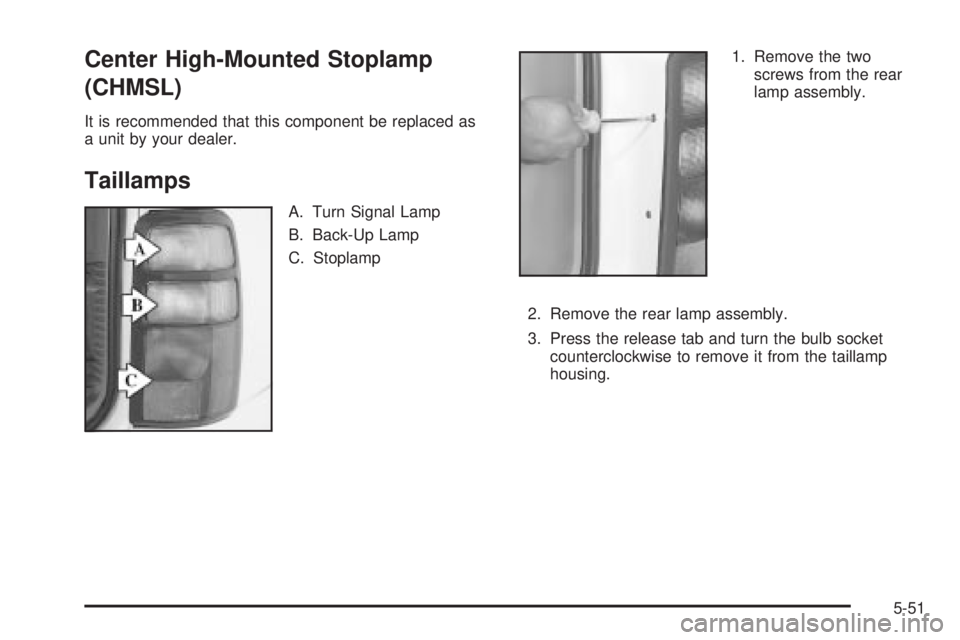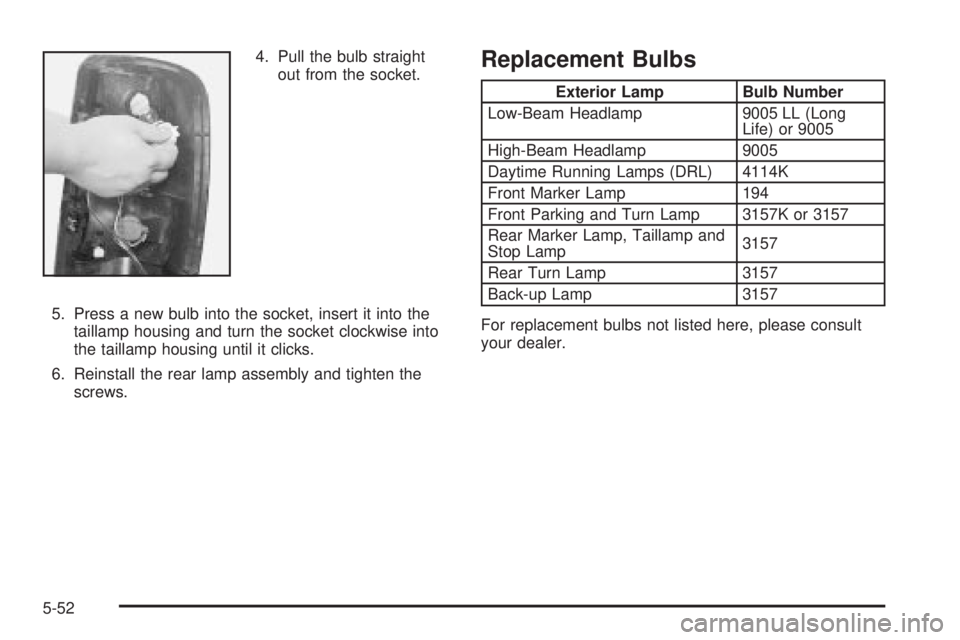GMC YUKON XL DENALI 2004 Owners Manual
YUKON XL DENALI 2004
GMC
GMC
https://www.carmanualsonline.info/img/44/57898/w960_57898-0.png
GMC YUKON XL DENALI 2004 Owners Manual
Trending: fuel type, odometer, power steering fluid, change wheel, check engine light, recommended oil, radiator cap
Page 351 of 468
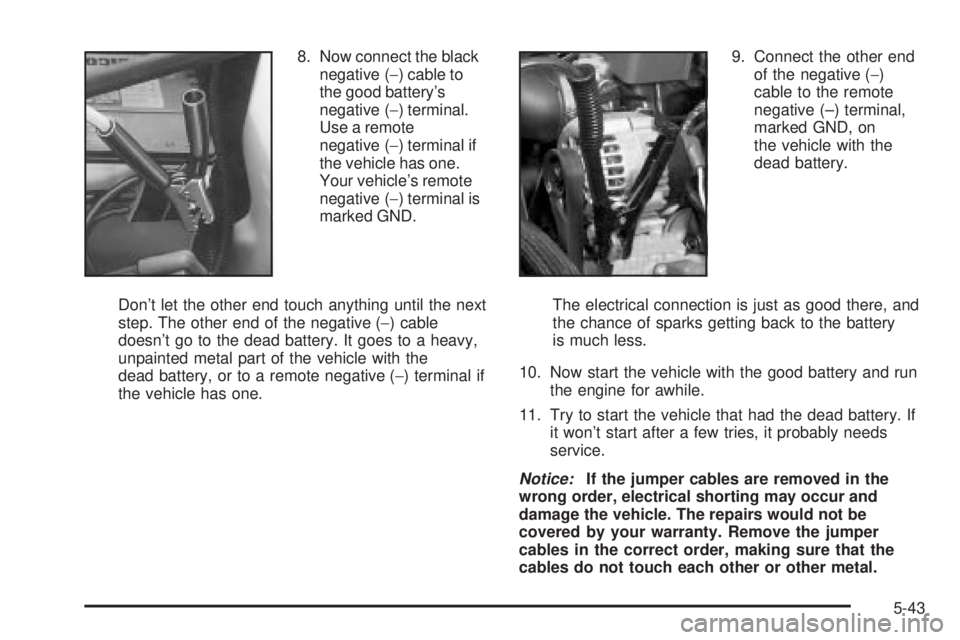
8. Now connect the black
negative (-) cable to
the good battery's
negative (-) terminal.
Use a remote
negative (-) terminal if
the vehicle has one.
Your vehicle's remote
negative (-) terminal is
marked GND.
Don't let the other end touch anything until the next
step. The other end of the negative (-) cable
doesn't go to the dead battery. It goes to a heavy,
unpainted metal part of the vehicle with the
dead battery, or to a remote negative (-) terminal if
the vehicle has one.9. Connect the other end
of the negative (-)
cable to the remote
negative (±) terminal,
marked GND, on
the vehicle with the
dead battery.
The electrical connection is just as good there, and
the chance of sparks getting back to the battery
is much less.
10. Now start the vehicle with the good battery and run
the engine for awhile.
11. Try to start the vehicle that had the dead battery. If
it won't start after a few tries, it probably needs
service.
Notice:If the jumper cables are removed in the
wrong order, electrical shorting may occur and
damage the vehicle. The repairs would not be
covered by your warranty. Remove the jumper
cables in the correct order, making sure that the
cables do not touch each other or other metal.
5-43
Page 352 of 468
A. Heavy, Unpainted Metal Engine Part or Remote
Negative (-) Terminal.
B. Good Battery or Remote Positive (+) and
Negative (-) Terminals.
C. Dead Battery or Remote Positive (+) Terminal.To disconnect the jumper cables from both vehicles do
the following:
1. Disconnect the black negative (-) cable from the
vehicle that had the dead battery.
2. Disconnect the black negative (-) cable from the
vehicle with the good battery.
3. Disconnect the red positive (+) cable from the
vehicle with the good battery.
4. Disconnect the red positive (+) cable from the
other vehicle.
5. Return the positive (+) remote terminal cover to its
original position.
Jumper Cable Removal
5-44
Page 353 of 468
All-Wheel Drive
Lubricant checks in this section also apply to these
vehicles. However, there are two additional systems that
need lubrication.
Transfer Case
When to Check Lubricant
Refer to the Maintenance Schedule to determine how
often to check the lubricant. SeeScheduled
Maintenance on page 6-4.
How to Check Lubricant
To get an accurate reading, the vehicle should be on a
level surface.
If the level is below the bottom of the ®ller plug hole,
you'll need to add some lubricant. Add enough lubricant
to raise the level to the bottom of the ®ller plug hole.
Use care not to overtighten the plug.
What to Use
Refer to the Maintenance Schedule to determine what
kind of lubricant to use. SeeRecommended Fluids
and Lubricants on page 6-13.
(A) Drain Plug (B) Filler Plug
5-45
Page 354 of 468
Rear Axle
When to Check Lubricant
It is not necessary to regularly check rear axle ¯uid
unless you suspect there is a leak or you hear an
unusual noise. A ¯uid loss could indicate a problem.
Have it inspected and repaired.
How to Check Lubricant
To get an accurate reading, the vehicle should be on a
level surface.
The proper level is from 5/8 inch to 1 5/8 inch
(15 mm to 40 mm) below the bottom of the ®ller plug
hole. Add only enough ¯uid to reach the proper level.
What to Use
To determine what kind of lubricant to use, seeRecommended Fluids and Lubricants on page 6-13.
5-46
Page 355 of 468
Front Axle
When to Check and Change Lubricant
It is not necessary to regularly check front axle ¯uid
unless you suspect there is a leak or you hear an
unusual noise. A ¯uid loss could indicate a problem.
Have it inspected and repaired.
How to Check Lubricant
To get an accurate reading, the vehicle should be on a
level surface.
If the level is below the bottom of the ®ller plug hole,
you may need to add some lubricant.
When the differential is cold, add enough lubricant
to raise the level to 1/2 inch (12 mm) below the ®ller
plug hole.
When the differential is at operating temperature
(warm), add enough lubricant to raise the level to the
bottom of the ®ller plug hole.
What to Use
To determine what kind of lubricant to use, seeRecommended Fluids and Lubricants on page 6-13.
5-47
Page 356 of 468
Bulb Replacement
SeeReplacement Bulbs on page 5-52for the proper
type of bulbs to use.
For any bulb changing procedure not listed in this
section, contact your dealer.
Halogen Bulbs
{CAUTION:
Halogen bulbs have pressurized gas inside
and can burst if you drop or scratch the bulb.
You or others could be injured. Be sure to read
and follow the instructions on the bulb
package.
Headlamps
1. Remove the two pins on the top of the headlamp
assembly. To remove the pins, turn the outer pin
outward and pull it straight up. To remove the inner
pin, turn it inward and pull it straight up.
5-48
Page 357 of 468
A. Low-Beam Headlamp
B. High-Beam Headlamp
1. Pull the headlamp assembly out.
2. Unplug the electrical connector.
3. Turn the bulb counterclockwise and remove it from
the headlamp assembly.
4. Put the new bulb into the headlamp assembly and
turn it clockwise until it is tight. Use care not to
touch the bulb with your ®ngers or hands.
5. Plug in the electrical connector.
6. Put the headlamp assembly back into the vehicle.
7. Install and turn the two pins into the locking feature.
Front Turn Signal, Sidemarker and
Daytime Running Lamps
A. Sidemarker Lamp
B. Retainer Clip
C. Front Turn Signal Lamp
D. Daytime Running Lamp
1. Remove the headlamp assembly as mentioned
previously.
5-49
Page 358 of 468
2. Press the retainer clip (B), located behind the turn
signal housing, towards the outside of the vehicle.
3. Pull the turn signal housing out from the vehicle.
4. Press the locking release lever, turn the bulb socket
counterclockwise and remove it from the turn signal
housing.
5. Remove the bulb from the bulb socket.
6. Put the new bulb into the bulb socket.
7. Put the bulb socket into the turn signal housing and
turn it clockwise until it locks.
8. Put the turn signal housing back onto the vehicle
placing the hook and posts on the inner side into
the alignment holes ®rst and then the outer side into
the retainer bracket until you hear a click.
9. Put the headlamp assembly back into the vehicle.
5-50
Page 359 of 468
Center High-Mounted Stoplamp
(CHMSL)
It is recommended that this component be replaced as
a unit by your dealer.
Taillamps
A. Turn Signal Lamp
B. Back-Up Lamp
C. Stoplamp1. Remove the two
screws from the rear
lamp assembly.
2. Remove the rear lamp assembly.
3. Press the release tab and turn the bulb socket
counterclockwise to remove it from the taillamp
housing.
5-51
Page 360 of 468
4. Pull the bulb straight
out from the socket.
5. Press a new bulb into the socket, insert it into the
taillamp housing and turn the socket clockwise into
the taillamp housing until it clicks.
6. Reinstall the rear lamp assembly and tighten the
screws.Replacement Bulbs
Exterior Lamp Bulb Number
Low-Beam Headlamp 9005 LL (Long
Life) or 9005
High-Beam Headlamp 9005
Daytime Running Lamps (DRL) 4114K
Front Marker Lamp 194
Front Parking and Turn Lamp 3157K or 3157
Rear Marker Lamp, Taillamp and
Stop Lamp3157
Rear Turn Lamp 3157
Back-up Lamp 3157
For replacement bulbs not listed here, please consult
your dealer.
5-52
Trending: warning, auxiliary battery, recommended oil, tow, mirror controls, automatic transmission fluid, fog light

